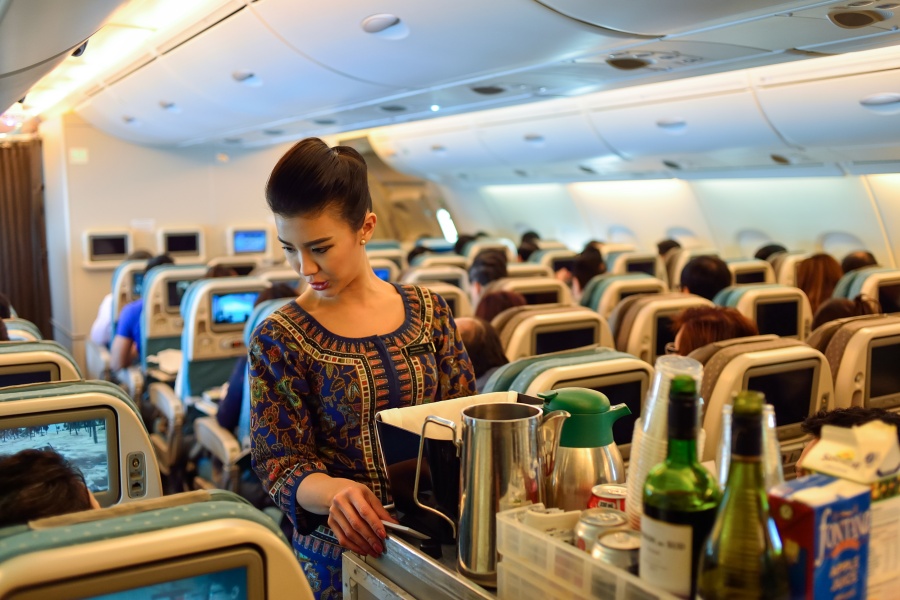Access selected deals available with budget and full-service airlines
Lock any airfare that sounds great. You don’t lose anything if you cancel it
Call us anytime for any assistance. We do not go into hibernation
Your personal and financial information stays secure with us
Singapore Airlines Limited (SIA) is the flag carrier of Singapore, globally renowned for its exceptional service, innovative offerings, and status as one of the world’s leading airlines. Headquartered at Airline House in Singapore, SIA operates its primary hub at Singapore Changi Airport (SIN), consistently voted among the world’s best airports. Below is a comprehensive overview of SIA’s history, operations, fleet, services, challenges, and future outlook.

Singapore Airlines traces its origins to May 1, 1947, when Malayan Airways Limited (MAL) operated its first flight from Singapore’s Kallang Airport using an Airspeed Consul. MAL expanded regionally, serving destinations like Jakarta, Medan, and Saigon. In 1963, following the formation of Malaysia, MAL became Malaysian Airways, then Malaysia-Singapore Airlines (MSA) in 1966 after Singapore’s independence. Due to differing national priorities, MSA split in 1972, with Singapore establishing Singapore Airlines on October 1, 1972, inheriting MSA’s Boeing 707s and 737s.
SIA quickly built a reputation for excellence, introducing the iconic “Singapore Girl” branding in 1972, symbolizing gracious hospitality. In 1977, SIA launched services to London with Boeing 747s, followed by Los Angeles in 1980 and San Francisco in 1988. The airline pioneered long-haul travel, launching the world’s longest nonstop flight from Singapore to Newark in 2004 using Airbus A340-500s, a route relaunched in 2018 with A350-900ULRs as the world’s longest flight (9,537 miles, 18–19 hours) to New York JFK.
SIA joined the Star Alliance in April 2000, enhancing global connectivity with partners like United, Lufthansa, and Air Canada. In 2007, SIA became the first airline to operate the Airbus A380, debuting on the Singapore–Sydney route. The 2013 launch of Scoot, its low-cost subsidiary, and the 2017 merger of SilkAir into SIA expanded its market reach. During the COVID-19 pandemic, SIA grounded most of its fleet, raising S$21.6 billion through equity and bonds by June 2020. In 2023, SIA reported a record S$2.7 billion profit, reflecting a strong recovery.
Recent milestones include the 2024 merger agreement with Air India, creating a transformative aviation group, and the 2025 launch of a new First Class cabin on retrofitted Boeing 777-9s, set for delivery in 2026.
As of April 2025, SIA operates a fleet of 149 aircraft, including Airbus A350-900s, A380-800s, Boeing 777-300ERs, 787-10s, and 737-8s, with an average age of around 7 years. The airline has 88 aircraft on order, including 45 Boeing 777-9s, 20 787-9s, and 23 Airbus A350-900s. SIA was the launch customer for the A380 (2007), 787-10 (2018), and A350-900ULR (2018), reflecting its commitment to cutting-edge technology.
SIA serves 80 destinations across 35 countries, including Singapore, Tokyo, Sydney, London, New York, and Los Angeles, operating over 2,800 weekly flights from Changi Airport. Key routes include Singapore–London Heathrow (four daily flights) and Singapore–New York JFK (world’s longest nonstop). Subsidiary Scoot serves 71 destinations, complementing SIA’s premium focus with low-cost options. SIA’s cargo division operates eight Boeing 747-400Fs, supporting global logistics.
Codeshare agreements with 28 Star Alliance partners and non-alliance carriers like Alaska Airlines and Malaysia Airlines enhance connectivity. SIA’s subsidiaries include SIA Engineering Company (maintenance), Singapore Airlines Cargo, and Scoot, with a 49% stake in Vistara (merging into Air India). The airline’s operations emphasize efficiency, with Changi’s Terminal 3 as its premium base and Terminal 1 for Scoot.